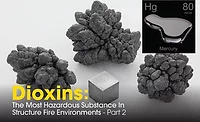Overhead & Profit: The 10 & 10 Myth | Part 2

Photo credit: utah778/ iStock / Getty Images Plus via Getty Images
The inability of contractors to cover overhead expenses is one of the key reasons why so many restoration companies fail and will continue to do so unless the overhead burden of the company is accurately reflected in their estimate’s markup.
Did you miss Part I of Overhead & Profit: The 10 & 10 Myth? No problem! Click here!
Free Estimates & Consulting
In addition to the general operating overhead expenses, restoration contractors are expected to provide free repair estimates and consulting time to insurance adjusters, agents and property owners, especially if the contractor is on approved vendor programs. The expense for estimators to provide free estimates or consultation on a weekly basis is very costly. Based on two estimators averaging 10 hours per week, each at $86.00 per hour, based on a salary of $180,000 per year, it comes to $89,440. Estimators are usually required to pre-qualify jobs before signing contracts to be sure they will be profitable for the company. Estimators can see four to five jobs per day, and most do not become sales. Here are some circumstances that can affect the sales volume of restoration contracts:
- No insurance or insufficient insurance coverage
- Xactimate® pricing is too low to make the job worthwhile
- An administrator of a managed repair program drastically reduces the contractor’s estimate to the point where the job will not be profitable
- Xactimate® pricing is too high to be competitive
- A competitor already signed the job and the client only wants a comparison estimate
- The job is too small
- The job is too big
- The job is too complicated or problematic
- The insured wants to cash out or do some of the work themselves
- The job is too far away
- The insured is looking for the lowest bid
- A public adjuster or attorney is involved
- The deductible is too high
- The insured wants to include extra non-insurance work at no additional cost
- The mortgage company withholds or subtracts repair funds to cover delinquent payments
- The insured wants their deductible absorbed
Workforce Inefficiency and Unbillable Time
One of the biggest financial burdens restoration companies face is labor inefficiency and unbillable labor time. Inefficiency and waste affect all types of businesses, but are especially costly to insurance restoration contractors. Insurance repair work and being on approved vendor programs requires contractors to have employees ready to respond to emergencies at a moment’s notice. However, the time spent traveling to and from jobs, getting or returning materials, or doing other tasks off-site during a typical workday costs the company hundreds of thousands of dollars a year in unbillable labor costs.
Here is an example of what this can look like:
John and Randy are given the task to do some drywall repairs on a home that has water damage. John is a journeyman carpenter and drywall finisher who gets paid $25.00 per hour (with worker’s compensation insurance, he costs the company $33.00 per hour) and Randy is his helper who gets paid $16.00 per hour (with workers compensation, he costs the company $22.00 per hour). The job is budgeted to take two men eight hours to make the repairs (16 hours).
They show up to the office at 7 am and meet with the project manager to go over the scope of work for the day. They get on the road by 7:30 and travel 45 minutes to the jobsite, unload their tools and get set up to start work. It’s now 8:30 and John realizes he needs more drywall, masking tape and screws before he can start, so they travel 20 minutes to the nearest home improvement store. It takes 20 minutes to get the material, wait in line, and pay the cashier. Now they have to travel 20 minutes back to the job. They then decide to take a 15-minute break and start work at 9:45. At 11:30, John and Randy take lunch for 45 minutes and return to work at 12:15. They work until 2 p.m. and take another 15-minute break. At 3 p.m., they see it’s getting late and gather their tools, clean up, and leave the jobsite by 3:15. They travel 45 minutes back to the shop and discuss with the project manager what is needed for the next day. John and Randy end up leaving the shop at 4:30 and clock out with an hour of overtime. John and Randy only actually worked on the project 4.5 hours, but the company had to pay each of them for eight hours plus two hours of overtime. John and Randy will end up having to spend two working days to complete the job, which is 32 paid hours because they only could achieve an average of 4.5 hours per day of actual repair work.
Using the example of the mid-size restoration company, if half of the workers cost $22.00 per hour and the other half costs $33.00 per hour and everyone only produces 4.5 hours of actual hands-on work onsite, the company loses 3.5 hours per man, per day (not including overtime).
Here is the math for a field workforce of 15 workers:
Eight men at $33.00 per hour lose 3.5 hours per day x 5 days (140 hours x $33.00) = $4,620 per week
Seven men at $22.00 per hour lose 3.5 hours per day x 5 days (122.5 hours x $22.00) = $2,695 per week
This means each week the company has to pay out over $7,315 in non-productive wages (not including overtime) plus other expenses. This amounts to $380,000 per year! The company would be better off firing everyone and using sub-contractors.
Granted, this seems more like an employee management problem, but even if John and Randy were more efficient and worked six hours on the job, there will always be lost labor time each day no matter how well employees are managed. This is due to time on the road, getting materials, breaks, time spent on the phone, etc., which cannot be billed to a specific job or recuperated.
It has been my experience that smaller to mid-size restoration companies are only a few months away from serious financial trouble or bankruptcy, especially when problems arise on jobs that stop progress, sales slowdown, receivables aren’t collected, or cash reserves are depleted. When this happens and a company falls behind, they begin the process of robbing Peter to pay Paul. This means the company uses the funds from new contracts to pay off old debt, fund other projects, or make payroll.
Price Markup Example Broken Down
Let’s look at a simple breakdown for a general contracting company that carries an overhead burden of 30%. This will show what the company needs to charge (or markup) to cover this overhead and still make 10% for profit. We will use a project that is estimated to cost $100,000 in labor and materials. If you assume $40,000 for gross profit and add it to a job cost of $100,000 you arrive at a figure of $140,000. Since overhead is based on total gross sales, now take 30% of the sale price to determine overhead and you get $42,000 (.30 x $140,000). Subtract that overhead from the job cost and you have $98,000 remaining.
In this example, the contractor cannot cover all of his overhead costs, let alone realize any net profit. In this scenario, a job that costs $100,000 will have to be marked up nearly $67,000 to cover a contractor’s gross profit (30% overhead plus 10% net profit) which is equal to 40% of the gross sale.
Example Job Cost Markup Table
This table shows how a job cost must be marked up by a contractor to attain different percentages of gross profit. Gross profit contains both net profit and a percentage to cover the contractor's overhead. No two contractors will have identical overhead, nor does overhead remain constant. The definition of job cost or, in this case hard cost, is the actual cost of labor and materials to perform a given task before any markup is added to cover overhead and profit. In this example, we will use $100 as the actual cost of materials and labor to perform a construction related task. The overhead column shows a percentage of markup over actual costs that may be charged by different contractors based on their varying overhead burdens. This is normally stated as a percentage of total sales. The profit column shows a contractor’s profit margin remaining constant at 10% of total sales. The markup equation column shows the math used to achieve a numerical factor to calculate the correct markup.
| Hard Cost | Overhead | Profit | Total Markup % | Markup Equation | Amount to Charge Customer |
|---|---|---|---|---|---|
| $100 | 10 | 10 | 20 | $100 / 80% = 1.2500 | $125.00 |
| $100 | 15 | 10 | 25 | $100 / 75% = 1.3333 | $133.33 |
| $100 | 20 | 10 | 30 | $100 / 70% = 1.4285 | $142.85 |
| $100 | 25 | 10 | 35 | $100 / 65% = 1.5384 | $153.84 |
| $100 | 30 | 10 | 40 | $100 / 60% = 1.6666 | $166.67 |
| $100 | 35 | 10 | 45 | $100 / 55% = 1.8181 | $181.82 |
| $100 | 40 | 10 | 50 | $100 / 50% = 2.0000 | $200.00 |
| $100 | 45 | 10 | 55 | $100 / 45% = 2.2222 | $222.22 |
Here is how the markup equation works: The first number in the equation is the job hard cost (actual contractor cost without any markup or profit added). The second number in the equation represents the percentage left over after the overhead and profit are removed. This is the amount needed to complete the work. The third number represents the decimal figure calculated after the hard cost is divided by the percentage needed to complete the work. The amount charged column is the job hard cost multiplied by this figure. It reflects what the contractor will need to charge a customer to cover the overhead and achieve the desired 10% net profit.
By this example you can clearly see that if a contractor is not careful to estimate the costs to cover the overhead and profit correctly, they won’t be in business for very long.
My hope is that the information in this article will shed some light on what it can cost for a restoration contractor to stay in business and provide the level of service consumers expect after a disaster.
This article was taken from Sean’s book, Secrets of The Insurance Game. If you would like more information or to speak with Sean, you can reach him at Sean@TheRedGuideToRecovery.com.
Looking for a reprint of this article?
From high-res PDFs to custom plaques, order your copy today!








